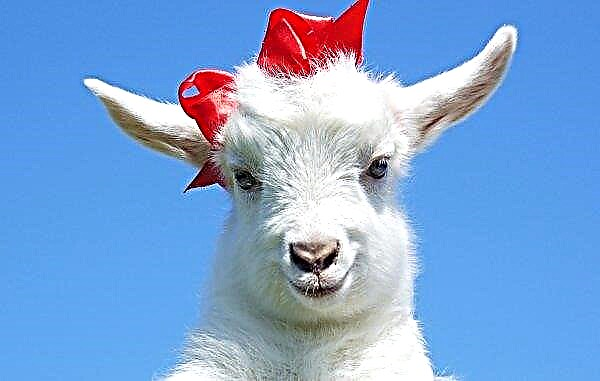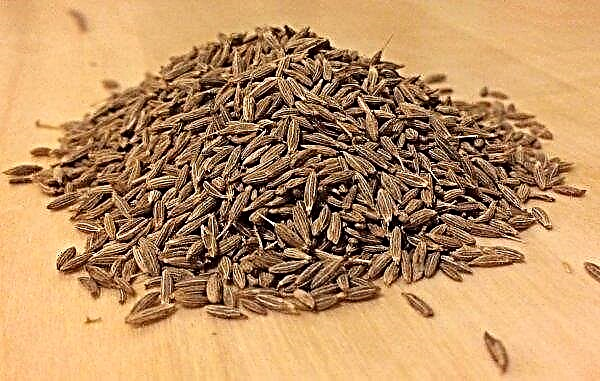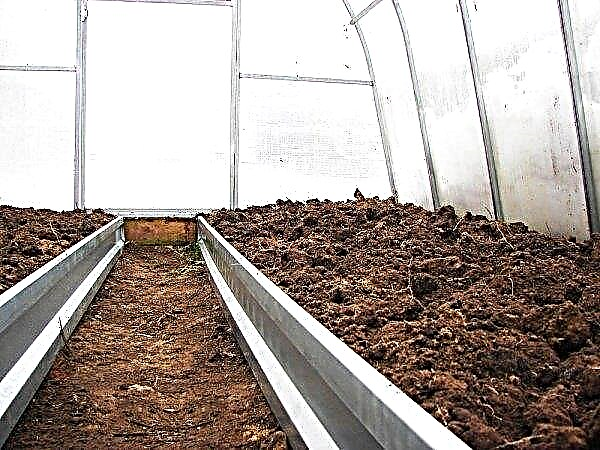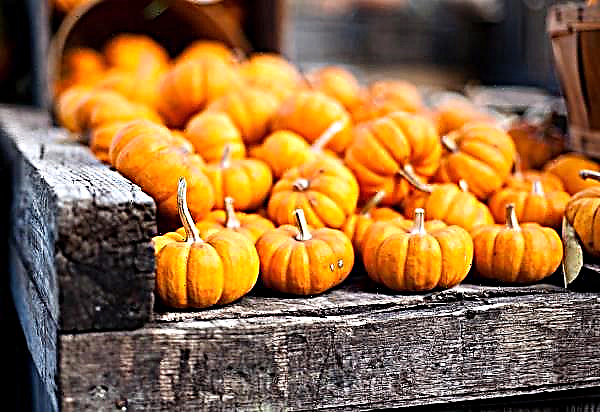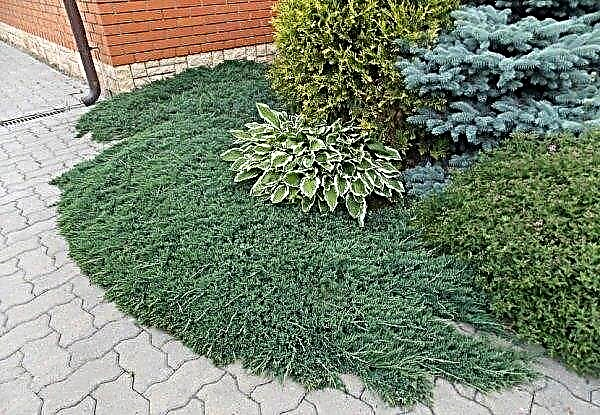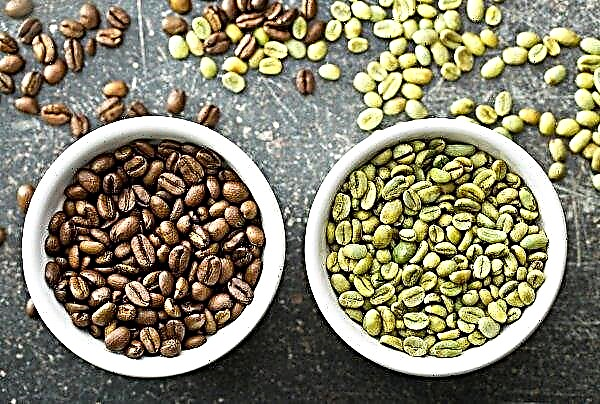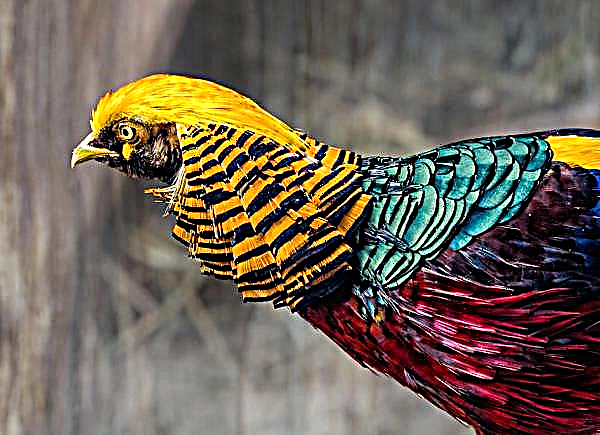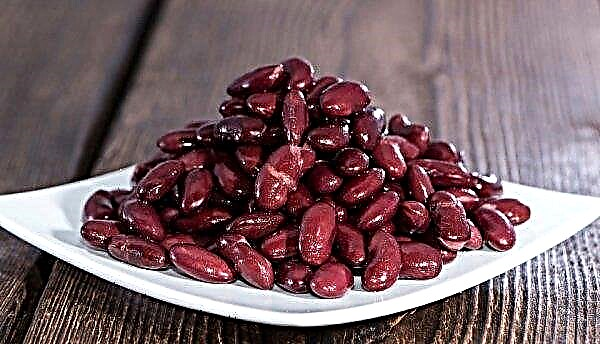Himalayan cedar, a common representative of decorative trees, is widely known for its useful qualities and is often used in landscape design. The article will consider the nuances of caring for this plant, as well as the rules of reproduction and planting scheme. A description of all processes is presented below.
Description of Himalayan Cedar
Himalayan cedar (deodar) is a tree from the Pine family. It is a long-lived: in Afghanistan, Pakistan and India reaches a millennium. Cedar has gained well-deserved popularity due to the appearance and a large number of useful minerals, various trace elements and vitamins in its composition.
Unusual appearance and unpretentiousness in leaving made the Himalayan cedar a favorite of landscape designers at the end of the XVIII century. The root system, steady against cold, and unpretentiousness to the soil allow this fast-growing coniferous tree to feel comfortable even on poor mountainous soils. In the Himalayas, it grows at an altitude of 3-4 thousand meters, where it easily tolerates temperature changes.Did you know? A few years ago, an American Brian Reid from a solid trunk of a cedar carved a body for a machine called the Cedar Rocket - Jet Cedar. The cars were equipped with an electric motor, and its maximum speed reached 88 km / h: it was listed in the Guinness Book of Records.
A rounded crown without characteristic tiers of coniferous plants crowns a mighty trunk up to 50 m high. A feature of this particular type of cedar can be considered dense glossy needles with clear edges, emerald green in color with silver or gray-blue tint. The needles themselves are seated on a branch in a spiral, while they can grow in both neat bundles and individually, reaching 40-50 cm in length.
The plant looks great solo and in group plantings. In large spaces, hedges look very status and fundamental - for example, from the Filin Blue variety (Filing Blue, Feelin Blue). The crown of the Himalayan cedar is beautiful in itself, lends itself perfectly to decorative formation. Moreover, this tree is even grown at home, creating unique living miniatures from it.
The real decoration of this plant is cones: large, up to 15 cm in height and 6–7 cm in diameter. Unique in shape, similar to a keg, they are located at the ends of branches in the upper part of the crown and are always turned with their top towards the sun. In one season, the bump changes color from blue to chic brown with a terracotta hue.

Growing Himalayan Cedar
It is not so difficult to grow the tree in question on your plot.
There are 3 ways:
- Independently obtain planting material from seeds. Advantages of this method: cheapness and the ability to immediately acquire a large number of copies, even taking into account rejection. Cons: 3 years will pass only until the seedling is formed and moves into a separate pot. This method requires a significant investment of time.
- Buy a tree in a special nursery. It will be more expensive, but during one season the cedar will be able to move to the open ground to a permanent place. If you find a suitable nursery, then the quality of the seedling and its health will be guaranteed even in case of shipment.
- In rare cases, when it is very necessary to save time, plants aged 7–9 years acquire. Plant them more efficiently in the winter, and the hole must be prepared in advance, in the fall.

A comfortable zone for growing Himalayan cedars in Russia is the Crimea and the foothills of the Caucasus. In this climate, the plant will need careful care for the time being until it reaches 3 m in height and forms a complete root system.
Seedling preparation
Before transplanting the plant to a permanent place, it should be hardened. To do this, it is recommended that young growth be taken out into the air for several hours during daylight hours (you cannot leave it overnight). In parallel with this, you need to constantly water the seedling so that the root soil is always sufficiently moist.
Fertilize the cedar before landing in the ground is impossible categorically. Also, at this time one should not loosen the seedling lump. It should be ensured that there are no fast-growing trees nearby that can block the young coniferous light. In this case, the site should be protected from the wind.
 The Himalayan cedar grows well on drained lightened soils, and a place for it needs to be selected sunny.
The Himalayan cedar grows well on drained lightened soils, and a place for it needs to be selected sunny.
When choosing a seedling, preference should be given to three-year-olds with a closed root system. Pay special attention to the location of the roots: they must be evenly laid in the upper layer and not be bent from the bottom.
The hole is prepared in advance, allowed to stand for at least 3 weeks, make sure that there is no groundwater or runoff. The extracted soil is facilitated by combining with sand, peat or wood ash. Humus or dung should not be added categorically: this can lead to the death of the plant. Like all conifers, the Himalayan cedar does not tolerate transplantation, so you need to choose a place with a view to the future.

Landing pattern
When purchasing seedlings of Himalayan cedar in the spring, it is important to have time to plant them before the kidneys wake up. If you decide to plant them in the fall, deciduous trees will be a good guideline. Be sure to wait until they drop all the foliage and only then determine the seedling in a permanent place. If you managed to get a tree of 7–9 years old in the nursery, then such an instance should be sold with a closed root system and an abundant earthen lump.
When planting a seedling in the ground, it is important to straighten the roots and form a small dense mound under them at the bottom of the hole. Sprinkle the young with nutritious soil, compact, alternating with the strait, to avoid air pockets. The distance between plants should be at least 4 m, to the nearest building - at least 3 m. When planting the Himalayan cedar, it is important to observe the orientation to the cardinal points: the most developed, fluffy part of the crown of the seedling should be turned south.Important! 1 kg of dry needles contains a large amount of minerals and vitamins (K, P, B1, B2, B3, PP, B6, H, C). If the collected needles are stored in a cool room with a temperature not exceeding + 50 ° C, all vitamins and minerals will be preserved.
Video: how to plant a cedar
Watering and feeding
Himalayan cedar is naturally hardy and is characterized by rapid growth in the first years of life. It is during this period that he is sensitive to watering, responds well to dressing. The soil of a young plant should not be overdried. But, like all conifers, this species is very sensitive to any stagnation of moisture and waterlogging. Cedars are fed with mineral complexes with a high nitrogen content. You can start fertilizing in April or in the second half of the summer, phosphorus and potassium are added to the composition.
Mulching and cultivation
When grown in gardens and parks, the tree, especially in the early years of its development, needs protection from weeds. Weeding should be carried out carefully, taking into account the surface structure of the root system. For the same reason, cedar cannot be planted where perennial grasses, shrubs, prone to thickening and aggressive root growth, are grown or planned to be planted.

Gentle loosening and mulching of the near-stem circle will ensure uniform penetration of moisture to the roots and prevent the formation of an earth crust. As mulch, it will not be appropriate for needles, as is usually the case with garden trees, but, on the contrary, forest litter of deciduous trees - birch, hazel, alder. More traditional mulch materials such as sawdust, compost and peat are also suitable.
Pruning
The Himalayan cedar independently forms a smooth conical shape, and it does not grow much when grown decoratively. Pruning is only necessary in order to free the plant from damaged or dried branches.
Did you know? In 2019, Sergey Voronov set a record for the longest wooden chain in Russia. The chain is made of cedar plank 6 m long and 35 mm wide.
It must be carried out before the new shoots open, in the spring. If you decide to form the pruning, then you need to finish it no later than September, so that before the autumn rains and the first frosts the plant has time to heal the wounds and recover.
Winter preparations
The main thing in preparation for the winter is not to provoke the late growth of young shoots. To do this, you need to carry out any top dressing no later than August. But you need to feed the plant with water for the future, since the evergreen cedar will evaporate moisture throughout the cold season and the exhausted one will come to the first heat.

If winter can bring heavy snowfalls in your region, then a plant, especially a young one, needs a tight binding of the crown with twine or a special net to avoid breaking branches under the weight of the snow layer. It is better to cover the tree with burlap or some special non-woven material - as soon as the thermometer starts to show 0 ° C in the dark.
The trunk circle should also be protected before the cold - for example, overlaid with spruce branches. At the first spring thaws, the needles should be removed to avoid the greenhouse effect, rotting and the spread of fungal infections.
 This plant may be affected by wind. First of all, this, of course, concerns young growth. For the winter, trees are reinforced with streamers or even built temporary houses to protect them from wind gusts: the cedar, which has not yet formed a strong root system, can be torn out of the soil and irreparably damaged.
This plant may be affected by wind. First of all, this, of course, concerns young growth. For the winter, trees are reinforced with streamers or even built temporary houses to protect them from wind gusts: the cedar, which has not yet formed a strong root system, can be torn out of the soil and irreparably damaged.
Breeding
Seeds are ready to fall out of the cone 1.5–2 years after its formation. You can get seedlings from the seeds yourself, but the cones must first be inspected so that they are clean, without mechanical damage, signs of the presence of insects, fresh and have a rich coniferous smell. Cones placed in a warm, dry place very soon open and give seeds.
To prepare new seeds, you must:
- Submerge them in a weak solution of manganese for 1.5–2 hours to protect against fungal infections.
- Place the treated material for 3 days in water, which should be updated every day.
- Before sowing, it is necessary to carefully mix the seeds with clean river sand or peat in a ratio of 1: 3 and, adding water, bring the mixture to the state of loose dough.

This seed mixture should be carefully poured into a box on the bottom of which a layer of dry grass is already laid, and holes for constant ventilation are drilled in the sides. Once every 2 weeks, the mixture is moistened, preventing excess evaporation, covering from above with the same dry grass. It should be stored at a temperature not exceeding + 50 ° C heat.
After about a few months of such preparatory planting, the material is sent to a box with light loamy soil, observing a depth of not more than 2 cm. If the box is planned to be stored in the fresh air, it must be covered with gauze so that the birds do not glue the seeds. Future plants should be transplanted into separate pots after 3 years. All this time they should spend in a slightly shaded place, protected from drafts and overdrying.

Beneficial features
The tree in question is a real storehouse of nutrients. It has antifungal, expectorant, diuretic, antiseptic, regenerative, sedative and insecticidal properties. Also, the plant helps to reduce stress, restores the nervous system, is effective for baldness and dandruff, treats a number of diseases.
- Among these ailments:
- respiratory diseases;
- rheumatism;
- gastrointestinal problems;
- tuberculosis;
- dermatological rashes.
Important! Cedarwood is popular for its hardness, pleasant aroma and antiseptic properties. Hindus considered the plant sacred, the Phoenicians used it to build ships, the Egyptians as the basis for sarcophagi.
Essential oil is obtained from the wood, needles and bark of this tree, which calms the nervous system, relieves fatigue and headache, and helps with colds. Vegetable oil is made from nuts, rich in various amino acids and vitamins (A, B2, B3), proteins and carbohydrates, micro and macro elements.

Not only appearance, but also rare wood in beauty and quality is appreciated in this plant. Durable, rare color and pattern material is in demand in the manufacture of premium furniture, design elements, stairs, and in the decoration of luxury goods.
How the Himalayan cedar grows in Crimea
Unpretentious evergreen Himalayan cedar, calmly withstanding droughts and short-term cooling, today is one of the most valuable conifers in the south of Crimea. They started growing it here in the last century, and today adults grow in the strength of trees with magnificent unique crowns on the streets of resort towns, in parks and on natural slopes.

Without exaggeration, we can say that it is cedars today that determine the appearance and special color of modern Crimea. Once selected from a whole list of species and varieties and recommended for planting in Crimean resorts, cedars today successfully bear fruit and even occasionally give self-sowing. Forests of this valuable species of trees are not uncommon today.
Now you know about the important principles of planting and growing Himalayan cedar, as well as caring for it. Modern designers often use it for decorative purposes and decoration of garden plots.

